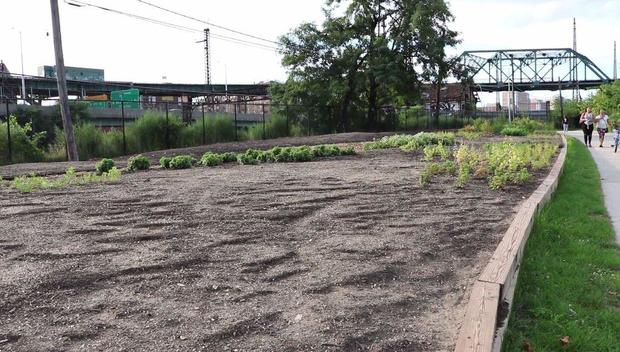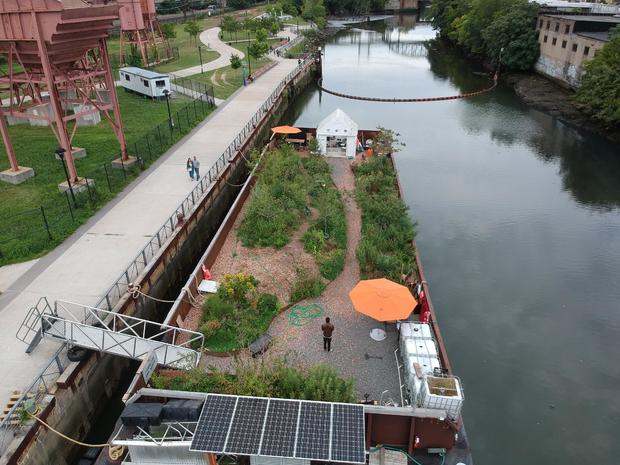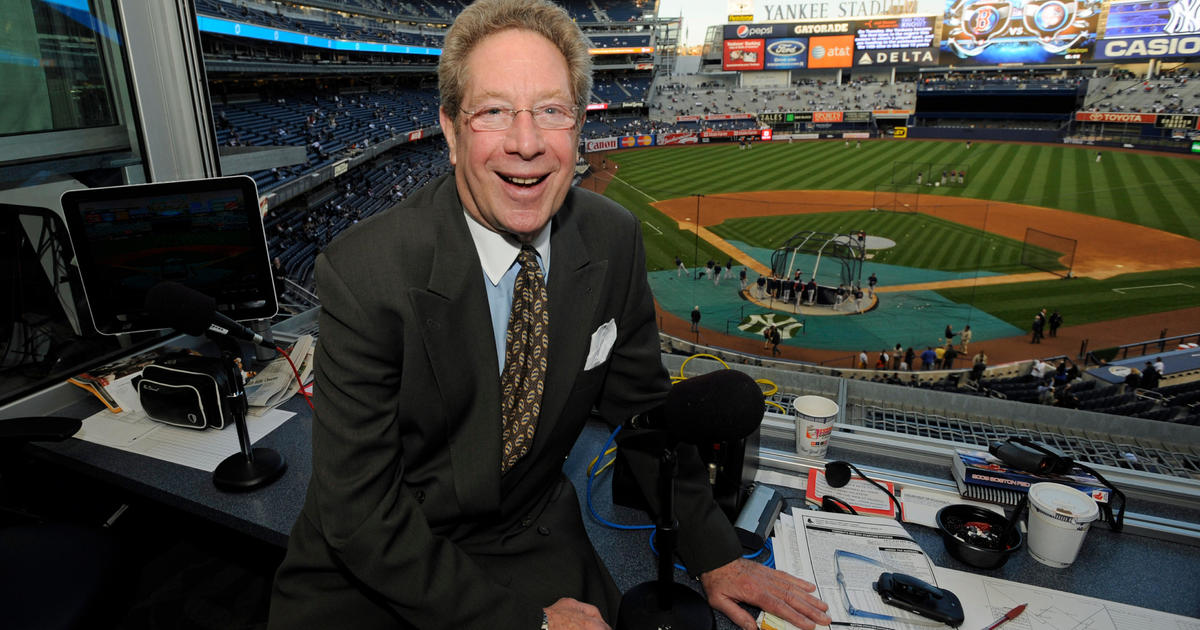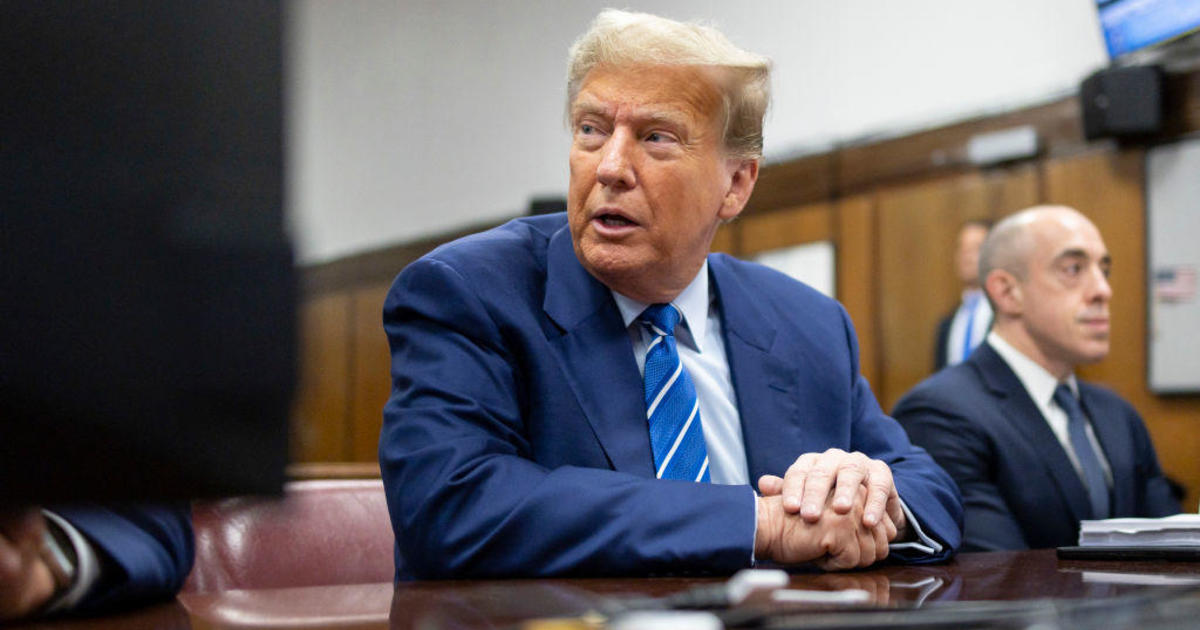"Floating food forest" docked in New York at one of the largest "food deserts"
NEW YORK -- As 18-year-old Naseem Haamid rounded a busy Bronx street corner, the scenery changed from honking horns, screeching tires and rumbling train tracks to clean, green space on a quiet waterfront. There, a 130-foot-long repurposed barge called Swale was docked at the edge of the waterfront. It was skirting a century-old law against food being grown in New York city's public spaces by cultivating fruits, herbs and vegetables while on the city's waterways, proving that city spaces can literally bear fruit that makes its citizens healthier.
Concrete Plant Park, where Swale is docked, still had the relics of its own industrial past: terracotta-colored concrete mixers standing tall against the sky like strange trees, reminders of the bustling streets steps away. The park is in the middle of the South Bronx, one of the largest food deserts in the nation, making it a perfect home for New York City artist Mary Mattingly's "floating food forest."
"We don't have that many spaces in New York and that many options for fresh food and for food that's inexpensive and that's healthy," said Mattingly.
Mattingly hopes Swale will have people rethink food as a public resource. For areas like the South Bronx, fresh food may travel over or through their community without ever stopping to provide options for its residents. The Hunts Point food distribution center, just across the water from where Swale is floating, is one of the largest food distribution centers of its kind in the world, yet the food inside seldom finds its way onto residents' plates in the Bronx. Instead, it provides food for wholesale food businesses, markets and restaurants inaccessible and too expensive for local residents.
"So when I think about food, I think about rice and beans and chicken and McDonalds and sandwiches and all those fast food things because...when you walk up Westchester avenue, those are the things that you see and that's what we have access to," said Haamid.
The Bronx ranks 62nd out of 62 counties in New York when it comes to important aspects of population health. A key contributor is the lack of access to fresh, affordable food which can lead to health issues such as high blood pressure and cholesterol.
"But when young people come to Concrete Plant Park and they're able to come onto Swale and see like mint, and a watermelon plant, peaches, they're like 'oh this could grow in the Bronx? This could grow in our community and we could have access to it?' It's amazing."
The United States Department of Agriculture defines food deserts as parts of the country vapid of fresh fruit, vegetables and other healthful whole foods, usually found in impoverished areas. The agency attributes this issue largely to a lack of healthy food providers.
The Food and Nutrition Service under the USDA estimates about 13.5 million people are in what they've determined are "food desert tracts," that have low access to sources of healthful food. The majority of that population, 82 percent, live in urban areas.
The ordinance in New York City that bars food from being grown, picked or foraged on public parkland is intended to stop practices that could damage the city landscape or cause harm to anyone eating food that may not be clean. Swale's unique positioning on the water is not just a novel art installation but an innovative solution, even a kind of quiet protest.
"We have a lot of space that we can use in multiple ways so what we're proposing is that there are a hundred acres of community garden space compared to 30,000 acres of park space and if we could utilize park space in multiple ways we could continue to create a regenerative city," said Mattingly
Swale has inspired the Parks Department to work with community-based organizations to create a "Foodway" on land in the Bronx. The pilot project is the first of its kind, allowing food to be grown on land in Concrete Plant Park. The goal is to move past the ordinance and prove that food can be grown on urban land in a safe, productive way.
"What I think Swale and the Foodway are doing is educating one another about these issues and giving us as community members an opportunity to engage, get their hands on plants and dirt," said Maggie Greenfield, Bronx River administrator for NYC Parks and the executive director for the Bronx River Alliance.
"You don't have many opportunities to do that in the city and to do it in a way that's a bit innovative in the sense of looking at the ways plants relate to each other and principals of permaculture and sustainability in agriculture. I think this makes it really exciting and we'll see where the conversation takes us."
Swale is kept afloat with the help of community-based volunteers like Naseem Haammid. The Youth Ministries for Peace and Justice teamed up with Mary Mattingly to give young people like him an opportunity to learn about what it takes to grow, sustain and eat clean, fresh, accessible food and in turn inform their community.
While Swale is in the Bronx, volunteers from YMPJ are trained on how to manage the spaces, from how to plant and take care of the crops to maintaining the water filtration system. They then give tours to community members, teach them about the different plants on board and earn educational credit and compensation for their work.
Dariella Rodriguez is the director of community organizing at YMPJ and is working with Swale for a second summer.
"The beauty also of it is there's an inter-generational connection that happens where people that come on the barge get to learn from teenagers and the teenagers get to learn from the community," says Rodriguez.
A facet of that inter-generational relationship is a re-discovery of heritage and culture. The Bronx's diversity is highlighted as community members share how they use the different plants, herbs and fruits in recipes from their own cultures.
"We have a bunch of different indigenous people here, we have a bunch of people from latino backgrounds, South Asian backgrounds, East Asian backgrounds, and we use a lot of similar cooking ingredients like cilantro, basil, tomatoes ... and I think it's best for us to get rooted back in our culture because i feel like there's a disconnect now days," said Chritopher Caraballo, a youth leader with Youth Ministries for Peace and Justice.
As different community members climb aboard, not only are they finding an inter-generational path back to their roots, but they are also raising awareness about the impact of food deserts at home and across the nation.
"There's a lot of real parallels between our community and other poor black, brown, immigrant communities," said Rodriguez. "This is happening all over the country and the more conversations we have about what a food desert is, the more we realize that so many other people are enduring the burden of the same environmental injustices."
That conversation of sustainability and the future of food deserts ultimately falls onto the plate of young advocates like Naseem Haamid. Haamid is looking ahead to first year George Washington University where he wants to study politics and government to pass positive legislation in his community.
"I care about the Bronx a lot, hold it near and dear to my heart and I'm proud to tell people that I'm from the Bronx so to be a part of these positive things that are coming to my community is amazing," he said. "I want to see what's growing on Swale, growing in Concrete Plant Park, and I want to see community members come and share their stories and pick fruits and vegetables."
"It brings the community together, it informs the community and it pushes forward a better tomorrow and a better Bronx."






